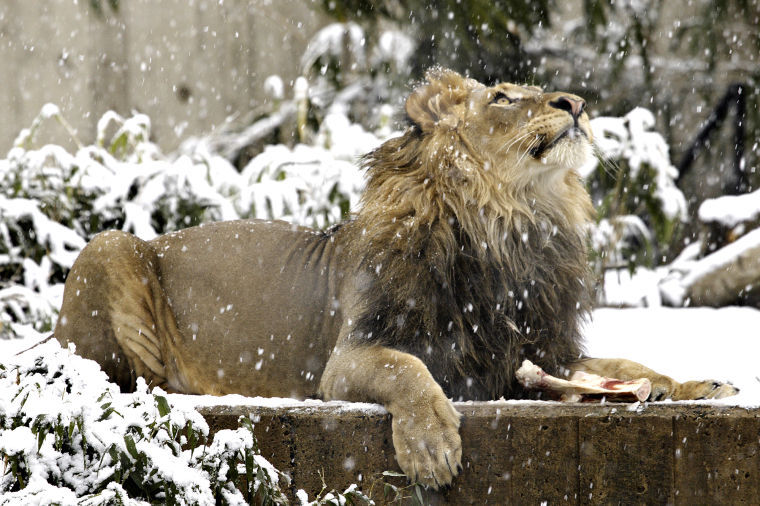Zookeepers need a lesson in caring for animals
February 19, 2014
If you want to see the unhappiest animals in the world you should take a trip to the zoo.
Not only are these animals confined to small cages outside of their natural habitat, but more zoos are becoming known for their lack of care for their animals. With animal neglect on the rise, harsher restrictions need to be implicated on zoos to regulate them and ensure animals are receiving proper care.
From the outside, zoos appear to be healthy environments that promote well-being, but that façade could not be further from the truth.
In 2010 a CBS News private investigation focused on the Smithsonian National Zoo in Washington, D.C. unveiled some troubling news for animal lovers: a number of different instances of animal neglect.
The Cheetah Conservation Station is a habitat at the Smithsonian National Zoo that displays cheetahs, zebras, gazelles, and other species.
Despite adding half a dozen species in 2009 to the conservation station, the zoo chose not to allow the animals any more space and kept the habitat the same size as it was beforehand, a move that would certainly increase stress among the animals.
One year after the animal increase, two animals died from being spooked and running into their habitat barrier, breaking their necks. These two deaths could have been avoided if zoos knew how to properly care for their animals.
The CBS investigation also included a case in which two hornbill birds waiting for their habitat to be constructed were kept in an indoor shack for seven months until a volunteer complained and helped the birds acquire an outdoor space. When the birds were moved to an outdoor yard, they were sent to share a space with a wallaby that bloodied its nose trying to escape from the two newly introduced animals that terrified it.
The problems regarding quality of animal care found in zoos are also issues that plague countries outside of the United States.
The Edmonton Valley Zoo in Canada is home to Lucy, an elephant whose health problems have sparked controversy regarding animal negligence.
According to The Canadian Press, despite the claim by zoo officials that Lucy is in good health and comfortable at the zoo, operations supervisor Dean Treichel said Lucy will be the last elephant at the Edmonton Valley Zoo. The decision was based on increased requirements for zoos that house elephants, requirements that the zoo doesn’t plan to implement for Lucy or any other elephants’ well-being.
The Canadian Press also stated that Lucy suffers from arthritis, respiratory issues and other ailments; however, the zoo has not allowed the elephant to be transferred to a sanctuary. Lucy is now the only elephant at the zoo, a problem considering elephants are social animals and she’s essentially in solitary confinement.
This disregard for animal health extends beyond just Lucy.
According to the BBC, just last week in Denmark a healthy giraffe named Marius was killed at the Copenhagen Zoo when zoo officials decided the giraffe had to be removed to avoid inbreeding.
The article continued to report that this comes after both the United Kingdom’s Yorkshire Wildlife Park and Robert Krijuff, the director of a wildlife park in the Netherlands, reached out to take the animal in.
Rather than rehome the giraffe, the zoo chose to shoot Marius with a bolt gun and skin his carcass in front of zoo spectators, including children, as they fed Marius to the lions.
The Copenhagen Zoo’s execution of Marius displays the true carelessness some zoos show their animals.
The zoo’s scientific director, Bengt Holst, justified the slaughter of Marius by emphasizing the importance of good genes to ensure long-term survival of a species. If this is the outlook on animals from zoo officials, how can we trust the animals they house will get the treatment required to live happy lives?
It is unfortunate, but Marius’ death and Lucy’s suffering are only some accounts of animal negligence, an act that probably happens more often than zoo outsiders would think.
Living behind this veil of ignorance and believing that animals are being treated with respect needs to come to an end. Until then, the cruelty that goes on behind the glass enclosure will continue
– Josh Babcock is a senior communication major from Pullman. He can be contacted at 335-2290 or by [email protected]. The opinions expressed in this column are not necessarily those of the staff of The Daily Evergreen or those of Student Publications.






















